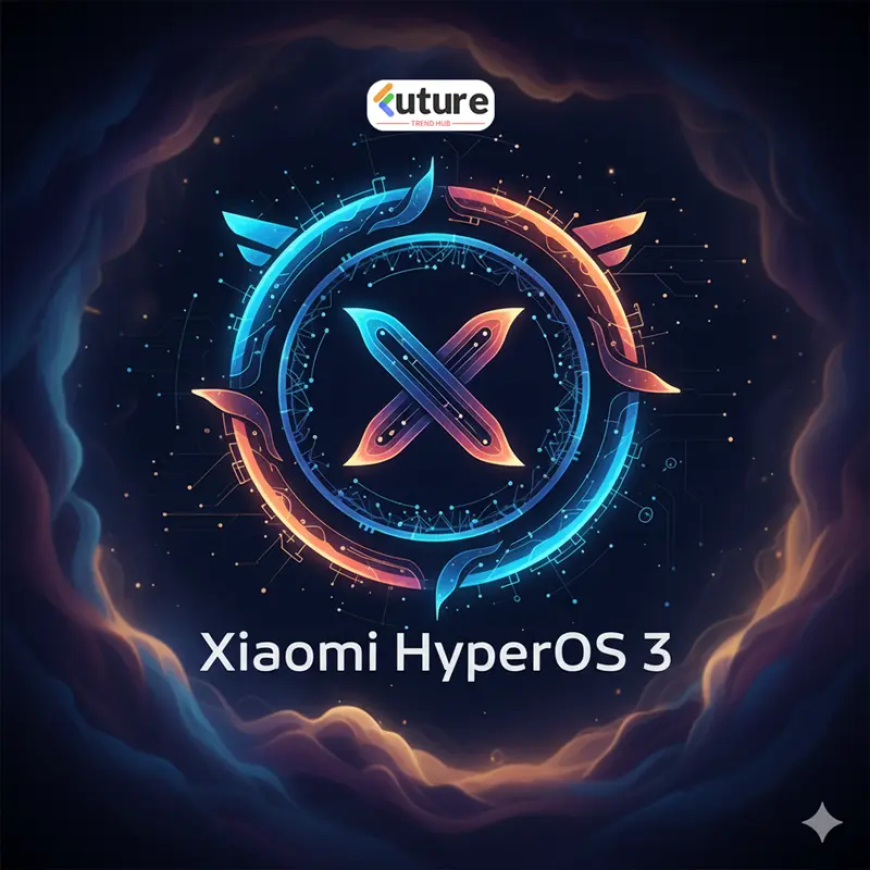Xiaomi HyperOS 3 Update: What’s New, When You’ll Get It, and Why It Matters
Discover the HyperOS 3 update from Xiaomi — new UI, performance boosts, device rollout schedule, and tips to prepare your phone for it.

A New Chapter Begins: My First Glimpse of HyperOS 3
I still remember the moment I first held a Xiaomi 14 Pro in my hand — it felt fast, sleek, and full of potential. But deep down, I (and every tech enthusiast I know) was waiting for one thing: HyperOS 3. This update promised more than just a repaint — it was Xiaomi’s chance to reimagine how its devices live together, look together, and feel together.
Fast forward to today, and we’re on the cusp of seeing HyperOS 3 in action across many Xiaomi, Redmi, and POCO devices. Over months of leaks, beta tests, and official teasers, we’ve pieced together what this update is all about — and I want to walk you through what I’ve learned, what to expect, and how to get ready.
What Is HyperOS 3 — And Why It Feels Bigger Than an Update
At its core, HyperOS 3 is Xiaomi’s next-generation system skin built on Android 16. Huawei Central+3Gizchina+3Gizmochina+3 But the more I read, the more I feel it's not just about Android version bumping — it's about weaving more intelligence, smoother transitions, and deeper integration across devices.
What’s New (from what leaks and reports tell us)
-
Super Island (a.k.a. Smart / Dynamic Island analog) — That hit of inspiration from iOS finds its echo here. The “Super Island” lives at the top of your screen, expanding contextually to show relevant app activity, alerts, media controls, timers, and more. NextPit+3Huawei Central+3Notebookcheck+3
-
Liquid Glass UI & visual refresh — Expect more blur, depth, subtle translucency, refined iconography, and refreshed lock screen animations. Notebookcheck+3MIUI ROM+3Huawei Central+3
-
Performance and system fluency — Xiaomi claims up to 21% faster app launches, 15% boost in gaming frame rates, and smoother animations across over 100 UI transitions. Notebookcheck+3Gizchina+3NextPit+3
-
Smarter inter-device connectivity — Mirrors between Mac, iPad, and your Xiaomi phone. Notifications, calls, SMS — easier handoff. NextPit+4Notebookcheck+4Gizchina+4
-
Camera & imaging advances — Better low-light auto exposure, more nuanced color science (especially on Leica-backed devices), and smoother zoom / motion capture. Huawei Central+3Huawei Central+3Gizchina+3
-
Privacy sandbox and Live Updates — More control over tracking, app-level privacy, and dynamic info updates (think seeing a live delivery ETA without opening the app). Gizchina+2MIUI ROM+2
All this suggests that HyperOS 3 wants to feel like a living, responsive system — one that anticipates your needs, not just reacts.
Who’s Getting HyperOS 3 — And Who’s Left Out
One of the most pressing questions I kept asking: “Will my Xiaomi (or Redmi / POCO) phone get it?”
First wave & confirmed eligible devices
When the beta opens, the early front-runners include:
-
Xiaomi 15 Ultra, 15 Pro, 15, 15S Pro
-
Redmi K80 Pro, K80 Extreme
-
Select tablets like the Xiaomi Pad 7 Pro / Pad 7S Pro Gizbot+4Gadgets 360+4Notebookcheck+4
The stable rollout is scheduled to begin October 15, 2025, and expand through January 2026. Huawei Central+4Bangla news+4YugaTech+4
Models that won’t make the cut
It pains me to report this, but some popular phones are excluded.
-
Xiaomi 11 series and many units from the Redmi Note 12 line are reportedly left out. Gizmochina
-
Some Poco and mid-range models such as POCO M5, Poco X5, etc., may also be missing the major upgrade. Gizmochina+1
These devices may still receive security patches or minor updates, but they’ll miss the full HyperOS 3 experience.
When It Rolls Out — The Timeline Journey
Let me walk you through the rollout roadmap — the kind of thing I’d pin up above my desk if I were betting on updates.
| Phase | Time Period | Devices / Scope |
|---|---|---|
| Beta / early access | August / September 2025 | Limited number of flagship devices and tablets Gizmochina+2Notebookcheck+2 |
| Stable rollout begins | October 15, 2025 | First batch: Xiaomi 15 line, Redmi K80 series, Pad 7 etc. XiaomiTime+3Bangla news+3Huawei Central+3 |
| Full rollout window | Oct 2025 – Jan 2026 | Expansion to mid-range, more Redmi / POCO / Xiaomi models XiaomiTime+3Bangla news+3YugaTech+3 |
Of course, delays or regional variations are always possible — this is tech, not a train schedule.
My Test-Drive Impressions (from leaks, forums, and hands-ons)
Though I haven’t held a fully stable HyperOS 3 yet, I’ve spent time in forums, tester builds, and leaks. Here are the highlights and caveats that caught my eye:
-
The Super Island is sleek and, when used well, unobtrusive. But in some early betas, it felt slightly disruptive with overlapping gestures. (Reddit users echoed similar observations.) Reddit+2Reddit+2
-
Animations and UI transitions feel more alive, more fluid — in short, the phone feels more “present.”
-
On older eligible devices, some features (especially heavier AI ones) may be disabled or scaled back.
-
It’s early days — expect initial bugs or unstable behavior if you enroll in early builds.
I’m excited — I feel like this is Xiaomi staking claim to the “intelligence across everything” space in mobile.
How to Prepare Your Device (so you don’t get caught off guard)
Before you get that “System Update — HyperOS 3 available” banner, here’s what you can do:
-
Backup everything — photos, documents, app data. Use cloud or local backup.
-
Free up 5–10 GB (or more) of storage. The update is sizable. webtechneeq.com+1
-
Use stable Wi-Fi and keep your battery above ~50%.
-
Enroll in beta only if you’re okay with bugs — don’t do this on your primary work device.
-
Watch regional rollout details — just because it’s available in China doesn’t mean it’ll appear in India (or your country) immediately.
Why HyperOS 3 Matters — Beyond the Shiny Features
This isn’t just another “version 3.x” update. It’s Xiaomi’s pivot: toward ecosystem thinking, smarter cross-device flow, and AI-driven experience. If they pull this off, your phone won’t just be your screen — it’ll be your digital companion.
From the user’s side, that means:
-
Faster app response, smoother interactions, fewer lags.
-
Tighter integration if you also use Xiaomi tablets, PCs, or accessories.
-
A more future-proof system (with Android 16 foundation).
-
But also, some devices will age out — a reminder of how hardware limits software.







